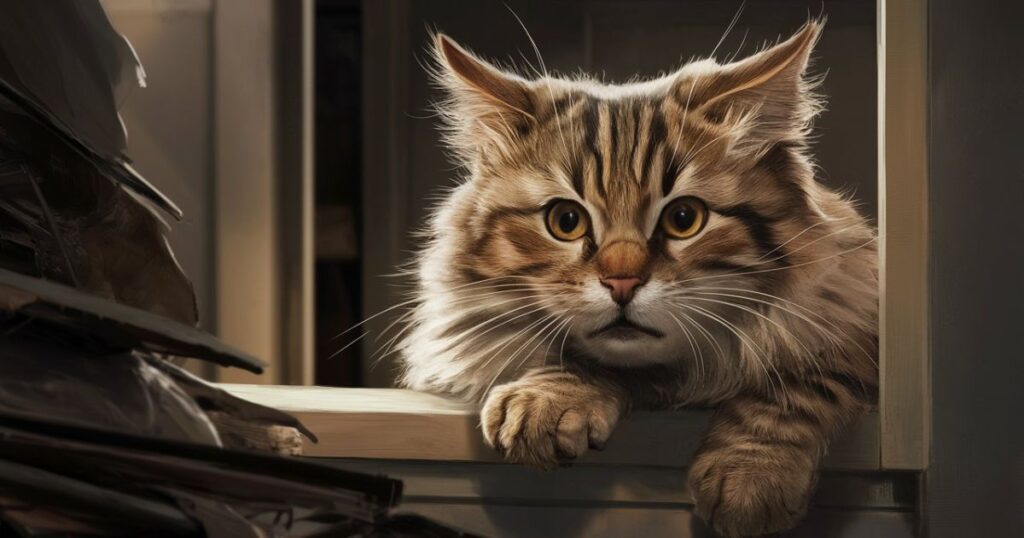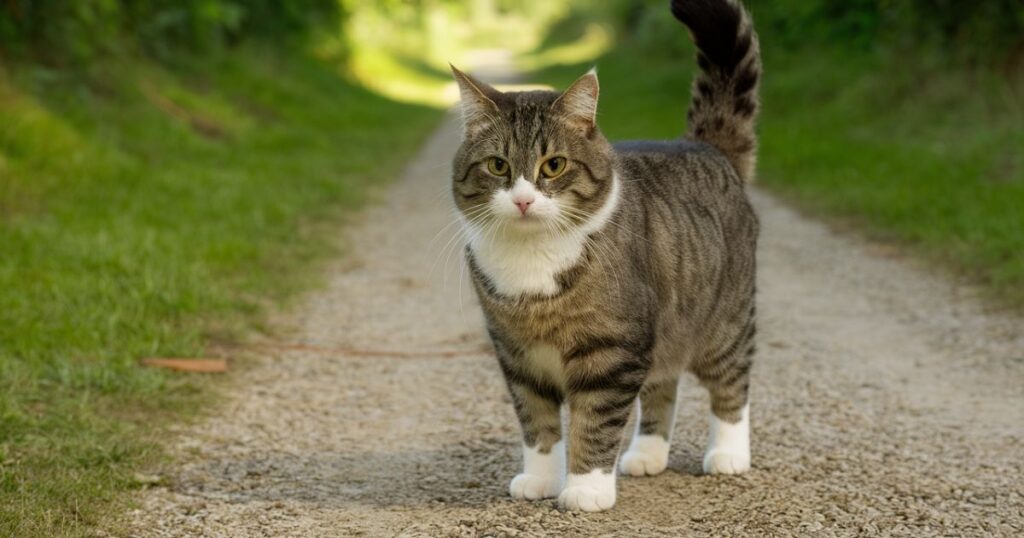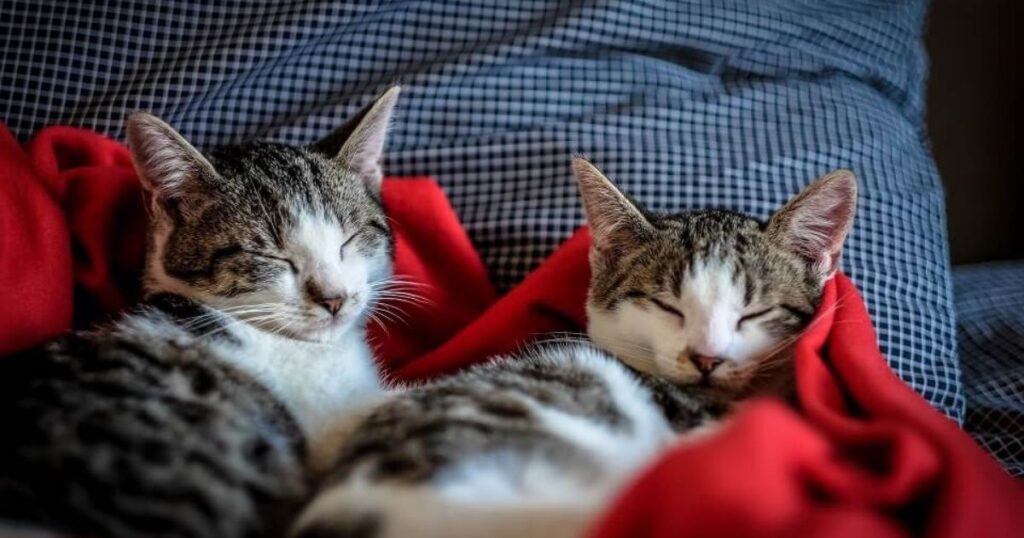Have you ever noticed your cat purring away, only to realize they’re also trembling? This unexpected combination can be quite puzzling and even concerning for pet owners.
While we typically associate purring with contentment, cats sometimes purr when they’re experiencing discomfort or distress. But don’t worry; there are several potential explanations for this behavior, and we’ll explore them in depth.
What are the Reasons for My Cat’s Trembling While Purring?
1. Strong Emotional Response
The purring sound we hear is a vibration from the larynx, also known as the voice box. When a cat feels a strong emotion, such as happiness, fear, or agitation, the brain sends signals to the muscles in the larynx, causing them to vibrate at a specific frequency.
This separates the vocal cords and creates the familiar purring sound. Simultaneously, the diaphragm moves up and down at the same pace, contributing to the vibrations.
Trembling in cats can be a manifestation of these intense emotions. When a cat experiences a potent emotional response, their body releases stress hormones like cortisol and adrenaline. These hormones can cause rapid, involuntary muscle contractions, resulting in shivering or quivering.
To better understand the underlying emotions, observe your cat’s body language. For example, a cat that arches its back, flattens its ear position, and has dilated pupils may be experiencing fear or agitation. In contrast, a cat with a relaxed body posture, slow blinking, and a loosely hanging tail movement is likely content and at ease.
2. Muscle Fatigue
Muscle fatigue in cats can result from various factors, such as extended periods of physical activity or play, malnutrition, or certain medical conditions. When a cat’s muscles become tired or overworked, they may experience trembling as a physiological response.
This trembling occurs due to the accumulation of metabolic waste products, like lactic acid, in the muscle tissue, interfering with the normal contraction and relaxation processes. As a result, the cat’s muscles may become less efficient, leading to involuntary shaking.
Purring, which involves the contraction of the diaphragm and laryngeal muscles, can further exacerbate muscle fatigue in cats. Since these muscles work in tandem to create the purring sound, a fatigued cat may tremble while purring due to the additional strain.
If you notice your cat trembling during or after periods of vigorous exertion, it’s essential to allow them adequate rest and monitor their overall health.
3. Anxiety or Stress

When a cat feels anxious or stressed, stress hormones like cortisol and adrenaline are released, which can cause involuntary muscle contractions, leading to trembling.
Purring may serve as a self-soothing mechanism to help the cat cope with stress or anxiety, as the vibrations generated by purring can release endorphins, promoting relaxation.
Some common signs that your cat may be experiencing anxiety or stress include:
- Hiding or withdrawal
- Excessive grooming
- Aggressive behavior
- Inappropriate elimination
- Changes in eating or sleeping patterns
Addressing environmental factors is key to reducing stress levels. Providing a comfortable living space with high perches, hiding spots, and scratching posts can help your cat feel more secure and relaxed.
Maintaining a consistent routine for feeding, playtime, and sleep can also contribute to a sense of stability, reducing anxiety. If stress or anxiety persists, professional help may be necessary.
Consult with a veterinarian or a certified animal behaviorist to identify the root cause and receive guidance on the most effective treatments and techniques tailored to their specific needs.
They may recommend behavioral modification techniques, such as desensitization or counter-conditioning, to help your cat overcome their anxiety or stress triggers.
Read More : Cat Not Eating Or Drinking? Why It’s Absolutely Critical To Call Your Vet
4. Pain Management
Pain can be a significant factor contributing to a cat’s trembling while purring. In some cases, cats may purr to self-soothe when experiencing discomfort, as the vibrations generated by purring can release endorphins, which have analgesic properties.
Furthermore, these vibrations have been shown to stimulate the release of nitric oxide, a molecule that can promote healing, reduce inflammation, and increase blood flow to affected areas.
Trembling while purring may be an involuntary response to pain as the cat’s body attempts to stabilize the affected area through muscle contractions. If your cat is experiencing pain, you may notice other clinical signs.
These can include a hunched posture, guarding the painful area, decreased appetite, or increased vocalization. Specific conditions that can cause pain in cats include dental disease, arthritis, urinary tract infections, and trauma.
If you suspect your cat is in pain, it is crucial to consult with a veterinarian to identify the underlying cause and develop an appropriate treatment plan. Depending on the diagnosis, your veterinarian may recommend various pain relief options, such as nonsteroidal anti-inflammatory drugs (NSAIDs), opioids, or gabapentin.
They may suggest alternative pain management therapies like acupuncture, laser therapy, or massage. Adjusting the cat’s environment to minimize discomfort, such as providing orthopedic bedding or using ramps to help them access higher surfaces, can also be helpful.
5. Cold Temperature Response
A cat’s trembling while purring could be a response to cold temperatures. Cats have a thermoneutral zone, which is the ambient temperature range in which they can maintain their body temperature without expending additional energy.
This range varies among individual cats, but it is generally between 86°F (30°C) and 100°F (37.7°C). When a cat’s surroundings fall outside of this range, they may experience discomfort and, as a result, start shivering or trembling to generate heat and maintain their body temperature.
Purring can be a natural response to the cold as well, as the vibrations produced during purring may help stimulate blood circulation and generate a small amount of internal heat.
The combination of shivering and purring in cold environments serves as a dual-function coping mechanism to both self-soothe and maintain body temperature.
To help insulate your cat and maintain their body heat, provide cozy bedding, such as heated pet beds or blankets. Also, consider placing their bed in a draft-free area, away from cold floors or exterior walls.
6. Aging and Muscle Weakness

As cats age, they can experience muscle weakness and loss of muscle mass, a condition known as sarcopenia. It is estimated that up to 50% of cats aged 15 and above are affected by this condition.
This decline in muscle tone can result in trembling or shivering, even while purring. Older cats may experience a decline in their ability to maintain muscle tone, causing them to tremble more frequently.
Purring can serve as a self-soothing mechanism for older cats experiencing muscle weakness or discomfort. The vibrations produced during purring can help stimulate blood circulation and promote relaxation, providing some relief to the aging cat.
It’s important to note that trembling in older cats could be a sign of an underlying health issue or a result of the natural aging process, so it’s crucial to consult with a veterinarian to determine the exact cause.
Consider making some adjustments to their environment and routine. Providing comfortable and supportive bedding can help alleviate pressure on joints and muscles, reducing discomfort.
Incorporate gentle exercise and playtime into your cat’s daily routine to maintain muscle strength and overall health. Regular veterinary check-ups are essential to monitor your cat’s health as they age and ensure any underlying health issues are addressed promptly.
Occasional Trembling While Purring Could Be Normal
In some instances, trembling while purring may not be a cause for concern and can be a temporary and normal occurrence in cats. Cats can experience involuntary muscle contractions or shivering while purring due to excitement, contentment, or other emotional responses.
This type of trembling is often harmless and may resolve on its own without intervention. It is essential to observe your cat’s overall behaviour and health to differentiate between temporary and normal trembling and situations that may require medical attention.
If the trembling is infrequent, short-lived, and not accompanied by any signs of distress or other concerning symptoms, it may be a normal part of your cat’s behavior.
In such cases, there is no need to worry as long as your cat continues to eat, drink, and exhibit regular activity levels. Cats display other concerning signs such as lethargy, loss of appetite, or vocalizing in pain, it is essential to consult with a veterinarian to rule out any underlying health issues.
Conclusion
A cat trembling while purring can have various causes, ranging from emotional responses and muscle fatigue to pain, cold temperatures, and age-related muscle weakness.
While occasional trembling may be normal, it’s crucial to observe your feline friend’s overall behaviour and health to determine if professional veterinary attention is required.
By understanding the potential reasons behind this behaviour and addressing any underlying issues, you can help ensure your cat’s well-being and provide them with the care and comfort they deserve. Remember, a purring cat is not always a content cat, so stay attentive to any accompanying signs of discomfort or distress.







